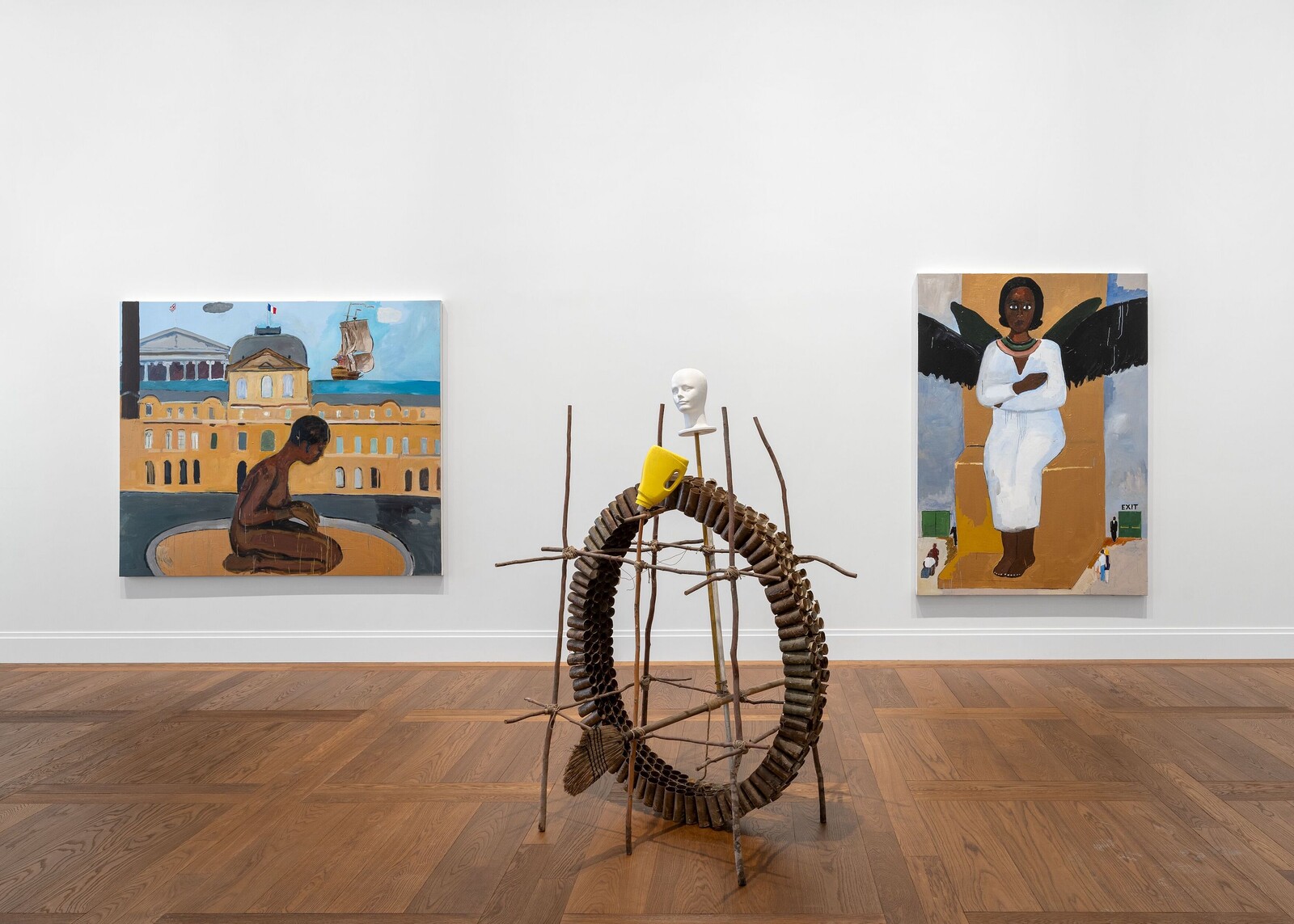Categories
Subjects
Authors
Artists
Venues
Locations
Calendar
Filter
Done
December 13, 2023 – Review
Henry Taylor’s “From Sugar to Shit”
Novuyo Moyo

The people in Henry Taylor’s paintings are usually surrounded by slabs of color, a graphic sensibility he shares with his high school peers and alternative comic book artists Los Bros Hernandez, whom he credits with setting the bar for his work. “I always thought, ‘Damn, they draw so much better than I.’ So I started just practicing my draftsmanship because of them. They intimidated me.” Taylor worked for ten years as a technician at Camarillo State Mental Hospital while studying at CalArts, providing assistance to some of the area’s most vulnerable people and at times featuring them in his drawings and paintings, developing the empathetic lens through which he would continue to frame his subjects.
Set in Hauser and Wirth’s Parisian multi-story outpost, and consisting of works made between 2015 and 2023 (the most recent made during a stay in Paris over the summer), “From Sugar to Shit” connects past and present, interior and exterior, public and private. Taylor’s subjects range from famous faces to personal acquaintances, but his frank, inquisitive approach sees both groups as equally worthy of commemoration. It’s not always clear whether he works from memory, archival materials, a live sitting, or a combination of these, but …
October 21, 2014 – Review
Pierre Huyghe’s “In. Border. Deep”
Jeremy Millar

Amber is a form of slow catastrophe, a long compression. A transformation, then, of the resin which once flowed thickly down branch and trunk before these extremities were replaced by those of heat and pressure found deep within chthonic sedimentation. A “beaming sun” (elektron) caught underground, amber’s classical name was “electrum,” and it was said to have formed from the tears of Phaeton’s grieving sisters after they had themselves been transformed into poplars. Their father was the sun.
The sun, its aurorae, planets, seem to drift through a gaseous space in the film De-extinction (2014), although these supposed objects—these points of light—are little more than an absence in that which surrounds them, bubbles of air caught in amber. Caught, too, are strands of… what, exactly? Of the formerly alive, and particles of dust, too, formerly of the living. Most particular are the two insects caught at their most vital, at the point of copulation, and if reproduction might be considered merely a form of genetic persistence then this, here, is both arrested and enabled by their gem-like enveloping. Their genes persist, as they themselves do, in one form or another.
“In one form or another” might indeed be considered an emblem of …